
1. Features of Middle Italian painting
Since the Florentine Leonardo da Vinci has awakened the dormant forces of painting, she in all of Italy consciously went to that goal in order to make the picture live a fuller real life and at the same time be a more perfect reflection of the highest truth.
Differences in areas in which painting then, as now, sought to achieve these goals, differences depending on the place, time and personality of the artist, always led to different consequences, and therefore it is natural that painting deviated either from reality or from artistic truth . The influence of the powerful forms of Michelangelo, expressed mainly in the drawing, rarely made it possible to clearly appear in central Italy to the picturesque conquests of Leonardo, and the demonic power of Michelangelo’s expression gave rise to mannerism, which uses its style so that complete mutual penetration of form and content gives way to external arbitrary motives no longer inspired by nature. Further development was most vividly manifested in Florence, where the masters of the second generation of the 16th century fell into Mannerism in their religious and secular historical paintings, moreover, as Jacob Burkgardt, Schaefer and the author of this book, found out, only in portrait painting, which itself leads to nature, they had the opportunity to show themselves "sons of nature."
Only two Florentine schools of the 15th century preserved and proved their viability: the school of Domenico Ghirlandaio and Piero di Cosimo, already under Leonardo’s influence. Behind the school Ghirlandaio remains the glory that she gave the training to Michelangelo. Now friends of Michelangelo’s youth, Giuliano Bujardini (1475–1554) and Francesco Granacci (1477–1543), two mediocre independent artists, developed side by side in it. Vasari, however, appreciates Bujardini as an excellent portrait painter, and if the so-called “Monaca”, a superbly painted portrait of a reading lady in the Pitti Palace (No. 140), is rightly attributed to him, then he really is in front of us. More significant is the son of Domenico, a student of Granacci Ridolfo Ghirlandaio (1483–1561), in his altar images. Initially, he followed Leonardo, judging by his "Marriage of the Virgin Mary" (1504), in the Louvre, written in the spirit of Fra Bartolomeo, and then in his two colorful paintings of the wonders of St.. Zinovia (1510) in the Uffizi, closely joined Albertinelli. From among the doubtful paintings of Leonardo, some researchers attribute to him the finely written "Annunciation" in the Uffizi, and most of them are a magnificent portrait of goldsmiths in Palazzo Pitti (No. 207), which is truly his best work.

Fig. 28. "The Wedding of the Virgin Mary" (1504).
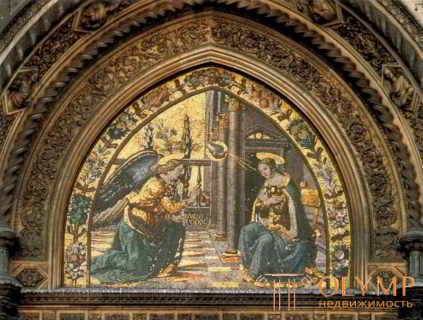
Fig. 29. The “Annunciation” by Granacci Ridolfo Ghirlandaio (1483–1561)
Fra Bartolomeo and the old friend and collaborator of this master, Mariotto Albertinelli (1474-1515), also originate from Piero di Cosimo’s school. The best works of the latter, stylish and strict “A visit to Our Lady of Sts. Elizabeth in the Uffizi (1503), clear on the closed concept of the “Trinity”, finally, the original, promisingly abbreviated “Annunciation” (1510) at the academy in Florence was conceived too independently to be considered simply an imitation of Fra Bartolomeo. Two Dioscuri, Bartolomeo and Mariotto, were followed by another pair of friends, Francesco di Cristofano Bigi, nicknamed Franciabigio (1481–1522), and Andrea Angeli, nicknamed Andrea del Sarto (1486–1530). Of these, the last, the youngest, but more significant, was a student of Piero di Cosimo himself, and the first was taught by Albertinelli. For some time they even held a common workshop.
2. Famous easel paintings by Andrea del Sarto
Andrea del Sarto, thoroughly studied by Ramone, Manz, Janichek, Schaeffer, Guinness and Knapp, developed into the head of the Florentine painting of the golden age next to and directly from Fra Bartolomeo. And he studied the cartons of Leonardo and Michelangelo and absorbed all the impressions of the rich Florentine, artistic life; all these impressions he reworked in himself, and from the school where styles intersected, he emerged as an independent, peculiar master. Only Berenson, leaving aside the beautiful drawings of Sanguin Sarto, spoke out about him differently. From Piero di Cosimo, Andrea inherited the poetry of the landscape, from Bartolomeo the symmetrical and pyramidal construction of groups of his easel paintings, from Leonardo the soft “sfumato” of his pictorial program. Andrea, except Leonardo, is the only Florentine who thinks his paintings in colors. The stateliness of the language of forms and the closeness of its design, so simple and natural, still rooted in the origins of Quattrocento, under the growing influence of Michelangelo, deliberately acquire more movements and, finally, become poorer due to repetitions. With all the relatively small changes in his style, Andrea still gives greater freedom of his painting to their consonance, portrays almost portrait faces, in clothes that usually hide bodies, always able to observe artistic unity between artificial grandeur of forms and fresh, joyful, fragrant colors, which allows see him as one of the first artists of the mood.
The first large series of frescoes by Andrea, in the front courtyard of the church of the Servites of St.. Annunziata in Florence, contains five paintings from the life of St.. Philip Benitzi (1504–1511), and already in the first of them, “Covering with the Leper's Clothing”, he attracts the mood of the landscape in order to elevate the action; then follow two paintings from the life of Mary, and in the famous Christmas of Mary (1514), both parts of the birthing ward are linked by the tall figure of Lucretia del Fede, the beautiful wife of the artist, which he immortalized in all of her female figures. But it was not until 1525 that Andrea wrote “Madonna del Sacco”, the stately Holy Family, located in the timpane over the front door of the courtyard, a majestic Holy Family.
The second large series of frescoes by Andrea (1511–1526), in the court of the brotherhood of the laity dello Scalzo in Florence, depicts only the life of the Baptist, in sepia tone. The fifth painting “Herod's Feast” (1522) and the sixth and seventh paintings, “The Beheading of John the Baptist” and “Salome with John’s Head” (1523), show the supreme force of his skill. How wonderful are the contrasts in the figures and groups of the painting “Pira”! How skillfully in both paintings the view of the most terrible is obscured by the executioner and the pose of Salome! The Last Supper of Andrea in the church of Salvi (1526–1527), despite the general similarity of the composition, still less resembles the Last Supper of Leonardo than the paintings of Paolo Veronese’s feasts, taken from life and at the same time decorative.
From the easel paintings by Andrea, “Christ in the form of a gardener,” in the Uffizi, represents an earlier, still almost immature work, and the later “Jacob”, leaning toward a boy dressed in white (1528), shows how many of his colorful and soulful moods. Of the thirteen paintings by Andrea in the Pitti Palace "The Annunciation" (1512), perhaps the finest of all the sophistication of images and mood brought into connection with the dreamy landscape, and the "Holy Interview" (1517) for the first time use that combination of standing and kneeling figures since that time Andrea has preferred it, while the “Young John” shines with that tender, captivating beauty that the sugary imitations cannot debase. Both the “Holy Families” in the Louvre and “Mercy” (“Caritas”), written during Andrea's brief stay in France (1518–1519), show all of his best features, while the “Sacrifice of Abraham” (1529) of the Dresden Gallery is one of the cold, very finished late master paintings.
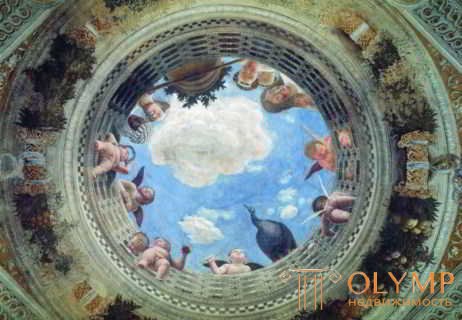
Fig. 30. Fresco by Andrea (1511–1526)
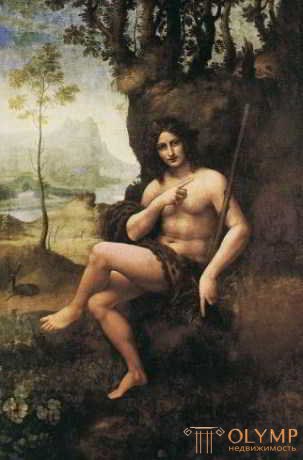
Fig. 31. "Holy interview" (1517)
New for his time were also rare portraits of Andrea, for the most part very vital half-figures in a half-turn on a monochrome background, endowed with unheard-of “sensitivity” for him at that time. Of the female portraits, the portraits of his wife Lucretia in the Madrid and Berlin museums stand above all. Among the masculine stand out those that were previously considered his own portraits, the dreamy youthful half-figures in the Uffizi and the Pitti Palace, as well as the London “Sculptor”.
In the early paintings, Franciabigio reminds Piero di Cosimo, for example, in “Slandering Apelles” in the Palazzo Pitti. The Madonna at the Fountain in the Uffizi, attributed by almost all the new connoisseurs of Franciabigio, recalls the Raphael Madonnas of Florentine time. Closest to Andrea are his frescoes inside the aisle courtyard of the Servites and in Scalzo. Independent processing of all alien is his oblong picture (1523) of the Dresden Gallery, with small figures, expressively depicting the history of Bathsheba. Franchabigio moved forward only Florentine portraiture. On a monochrome background, he wrote, for example, a half-length portrait of an anxiously looking man who is in the Liechtenstein Gallery in Vienna. Franchabigio especially preferred landscape portraits of transitional time in portraits and was in this respect old-fashioned Andrea: such are portraits of the dreamy young men of the Berlin and London galleries and Palazzo Pitti, the same world-famous portrait of the Louvre (No. 1644), formerly known as the “Silent”, known as the work of Francia, Raphael, Giorgione and Sebastiano del Piombo, until finally, experts have recognized him for the work of Franciabigio. In any case, this portrait is an unforgettable masterpiece.
Other comrades, supporters and students of Andrea, such as, for example, Domenico Puligo (1492–1527), Francesco Ubertini, nicknamed Bakkiakka (1494–1557), Rosso Fiorentino (1494–1541), whom we will meet again in France, and Jacopo Careucci and Pontormo (1494–1557), the actual student of Andrea, as painters of biblical scenes, already belong to the masters who use alien forms and motifs, but as portrait painters are independent artists of their time. One of the best portrait painters of the century was Pontormo, whom Scheffer put at the head of the representatives of the “court portrait” in Florence, which became the residence after Alexander Medici was elevated to the rank of duke (1531). The “sculptor” Pontormo in the Louvre still resembles portraits of the youth of Franciabigio. Sharply and frankly characterized, but the portrait of the Duke Cosimo in the Museum of Sv. Mark in Florence. About a dozen and a half of excellent portraits of his work have been preserved.
The disciple of Pontormo Angelo Allori, known as Bronzino (ca. 1502–1572), the book about which was written by Schulze, was already the main representative of the cold Florentine painting of Michelangelo’s motives of the last quarter of a century. Pictures of him on the plots of St. Scriptures like mannered in their majesty “Christ on the threshold of hell” (1552) in the Uffizi are almost unbearable for our present feeling. As a portrait painter, he, however, owns all the skills and all the intentions of his time. Until half a century, his portraits still possess the warmth of a general tone, the nobility of poses and are expressive in circumferences; later, following the spirit of the times, they became drier, colder, more superficial, with more deliberate poses and petty details. Compare, for example, his portrait of a lady in the Petersburg Hermitage with a portrait of a widow in mourning in the Uffizi! Bronzino was primarily the court painter Medici. The most beautiful portrait of Cosimo I is in the Palazzo Pitti, and the best portrait of his wife, the proud Spaniard Eleanor with her young son, is in the Uffizi.
The true student of Andrea del Sarto, later in his life, was Giorgio Vasari (1511–1574), a famous biographer of artists and architects, recommended to him by Michelangelo himself. As a painter of sv. Scriptures and he belongs to Michelangelo's most ardent followers. His art as a painter is shown by family portraits in Badia in Arezzo, remarkably expressive, despite the dry extract, portraits of Lorenzo and Alessandro de Medici in the Uffizi. It is quite clear that his name is also connected with the drawing Academy, founded in Florence in 1561
The Florentine painters of the last quarter of the 16th century, like Santo Titi (died in 1603) and Alessandro Allori (1535–1607), did away with the mannerism of the Michelangean direction and switched to “academic eclecticism”, from which elaborate but lifeless works emerged.
3. The main directions of Siena
Siena, the old rival of the imperious city of the river Arno - Florence, during the XVI century remained far behind in the artistic competition with it. The Siena painting of the XVI century, described in detail by Jacobsen, thanks to visiting masters such as Pinturicchio and Bazzi, reached a new heyday. Transitional masters, like Bernardino Fungai (1460–1516), still stand on the Old Sienna soil, inspired by Byzantine memories. Such paintings as his magnificent “Marriage of Mary” (1500) in the church of the Servites and in Santa Maria di Fontejusta, “Madonna” (1512) and “The Assumption of the Virgin Mary” in the Siena Academy, prove this with a dry language of form and stillness of the composition. He was, however, the first, says Jacobsen, “tore off the golden cover”, which deepened the landscape backgrounds for the viewer's eye, the first to replace the golden background with distant, gently traced landscapes. His student, perhaps incorrectly, is considered to be Giacomo Pakkiarotti (from 1474 to time after 1540), whose main picture is Ascension at the Siena Academy, despite its whitish, cold colors and plastic forms in the spirit of quattrochento, in the composition seeks already to the feeling of freedom of the XVI century. His paintings, however, are still very far from the incomparable completeness of the best works of this century. Girolamo della Pacquia used to be mixed with Pakkiarotti (from 1477 until the time after 1555), from numerous paintings in Siena churches that resemble Perugino, either Fra Bartolomeo, or Raphael, or Sodom, at some distance, should indicate “ Madonna between the Two Saints "in San Cristoforo and the altarpiece with the" Annunciation "and" The Kiss of Mary and Elizabeth "in the Siena Academy.
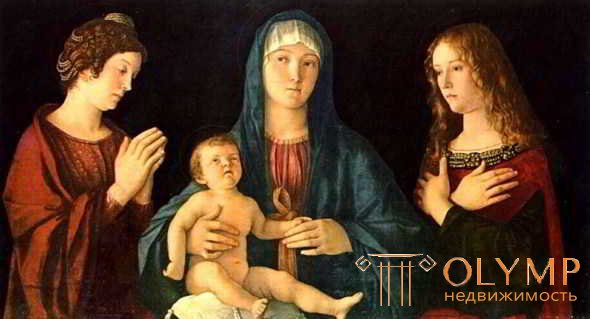
Fig. 32. Madonna between two saints
A new, truly artistic life was brought to Siena, his second homeland, by Giovanni Bazzi from Vercelli, nicknamed Il Sodom (1477–1551). They wrote about him Jansen, Julius Meyer, Frizzoni, Gobart Kest, Cesare Fachchio, especially authoritatively Jacobsen.
Sodom was a prolific, richly gifted artist. Having been educated in Vercelli, he worked until 1500 in the Milan galaxy of Leonardo, from 1501 to 1507 in Siena and its environs, and from 1507 alternately in Rome and in Tuscan cities, but mainly in Siena, where and ended my life. The works of his first Siena time are Leonardo in the broad sense of the word; under the influence of the Roman school of Sodom, then quickly improved his language of forms to the fullest expression of a sense of beauty. The beauty of the young clean ovals of the faces of women and young men with big eyes, then the gentle perfection of naked children's bodies, no artist conveyed more attractive than he. Large compositions on biblical themes of higher order with promising plans, although often coming out from under his brush, have never been, however, his strong point.
The first Siena time includes such easel paintings, as the altar image of the "Removal from the cross" of the Siena Academy, with famous mourners, written under the influence of Leonardo, a series of frescoes from the life of St.. Benedict in Santa Anna in Creta near Pienza (1503). To the nine paintings by Luca Signorelli in Monte Oliveto, Sodom added another 26, more direct from observation, a stronger drawing and gifted with a greater depth of life than even his later works. The best paintings are “The Broken Tray” with a magnificent portrait of the master, “The Burial” and “The Temptation of the Saints”, both with beautiful youthful figures.
In Rome, Sodom first painted (in 1508) the ceiling of the Stanza della Señatura, on which Raphael retained only some ornaments, and only during his second stay in Rome (1514) did he complete his wonderful frescoes from the history of Alexander the Great in one of the upper rooms of the Farnesin villa . The most luxurious composition here is “The Wedding of Alexander and Roxanne”, written according to the text of Lucian, containing a description of the picture of the Greek master Aethion.
Between 1510 and 1514 a striking and beautiful Christ arose at the column of the Siena Academy, whom Jacobsen calls the "most beautiful Se-Man" of the Renaissance. Around 1525, he wrote his wonderful “St. Sebastiana "in the Uffizi in Florence.
Of the later Siena frescoes of Sodom, it is the frescoes from the life of St.. Catherine in San Domenico (1526) denote its further development. The fainting saint receiving stigma from the Savior hovering above her, then her prayer at the appearance of an angel who brought the sacrament from heaven, present a state of divine ecstasy in a new, more expressive understanding. Полным чувством красоты дышат также фрески этого мастера в палаццо Пубблико в Сиене (1529–1534): знаменитые святые Витторио и Ансано красивыми нагими детскими образами, святой Бернардо Толомеи и, в нижнем зале, радостное «Воскресение Христово». Фрески, написанные Содома для братства Санта Кроче в Сиене, «Христос в Гефсиманском саду» и «Христос в преддверии ада» принадлежат к прекраснейшим произведениям. Они были сняты со стен и перенесены в академию.
Не упоминавшиеся ранее станковые картины Содома показывают его с тех же сторон. Мужским святым его алтарных картин не достает иногда устойчивого костяка, женским лицам — глубины религиозного чувства, а общему тону — теплоты красочных сочетаний. Светскую станковую живопись его характеризуют такие картины, как «Милосердие» («Caritas») в Берлине, две Лукреции (около 1504 г.), в музее Кестнера в Ганновере и в галерее Вебера в Гамбурге. В прекрасном портрете дамы, одетой в зеленое, в институте Штеделя во Франкфурте, Кест, Фриццони и Якобсен до и после Морелли хотели видеть произведение руки Содома, но другие правильно это отрицают.
The breakdown already shows later paintings in the Cathedral of Siena and in Santa Maria della Spina (1540–1542) in Pisa. In Siena and in Rome, he stood at his height. In any case, Sodom left Siena another city, compared with the one in which he first appeared.
4. The formation of creativity Peruzzi
About Baldassare Peruzzi (1481–1551) wrote Redtenbacher, Veeze, Vikgof, Fritzzoni and Herman. As a painter, he originated from the Pinturicchio frescoes in the library of the Cathedral of Siena, whose influence on his early ceilings and wall paintings (1504) in the choir of Sant'Onofrio in Rome is undoubtedly. The frescoes of the most mature time, such as the Madonna with a kneeling donor (1516) in Santa Maria della Pace in Rome, adjoining Raphael and Sodom, are shown to be his true cinquecento artist. In later works, for example, in the fresco of Augustus with the Sibyl in the church of Fontejust in Siena, and he sacrifices to the genius Michelangelo. But he gave his most personal Peruzzi in decorative works, for example, in the decoration of the ceiling Stanza d'Eliodoro (Heliodorus), only a part of those preserved by Raphael, in the famous ceiling painted in the hall of Galatea in Farnesine, and in the architectural and landscape paintings one of the upper halls of this villa, where Peruzzi acts as the foremost “promising painter”, as well as a master of decorative landscape painting, widely represented by northern Italian artists in the Villa Imperialale near Pesaro. Peruzzi should also be indicated as the first representative of the Roman facade painting of this genus, in which he introduced his style, although its facade decorations have not been preserved. We cannot imagine the outstanding architect of Peruzzi without Peruzzi, a monumental painter who complements it, but does not exceed it.
The time after the classics in Siena was represented by Domenico Beccafumi (1486–1551). In the cathedral of his mosaic of the floor, “The Sacrifice of Abraham” is in its own way still something higher, while its plafond paintings in the town hall on scenes from ancient history (1529–1535) by refined contours and colorful shades of clothes tend to decline. The boring “eclecticism” of the last quarter of the 16th century, however, had here its rather tolerable representative in the person of Francesco Vanni (1565–1609).
Sincere Umbrian school in its heyday was poor in new endeavors and forces. Orazio Alfani (1510–1583), the first head of the academy in Perugia (1573), was a mannerist of the Raphael direction. The famous Umbrian master of the second half of the century was Federigo Baroccio of Urbino (1526–1612), whom Balione and Bellori had announced to the whole world, and in recent times, Shmarsov thoroughly studied and glorified him as a representative of Baroque painting and an intermediary between Ruben. St. Sebastian in the cathedral in Urbino (1557) shows that the initial development of this artist was made in the Roman school. Then the sun shone on Correggio, as Madonna di San Simone proves in the Urbino Gallery (circa 1564). Its further development consisted in the internal processing of influences perceived by Correggio, the baroque sides of which Barochchi in the Cathedral of Perugia (1569) had already been further refined in Barochchi in the Cathedral of Perugia, and he amazingly assimilated the radiant light and shadow and graceful views of the great Parma master in his later works. Almost all galleries in Europe have pictures of this master. It should be noted "Madonna del Popolo" (1579) in the Uffizi with its delightful scenes for children, the majestic, radiant colors and the picture "Position in the Coffin" in Santa Croce in Sinigaly (1582), striking, covered by the ecstasy of "The Temptation of St. Francis "in San Francesco in Urbino and monumental in composition and imbued with a clear light and soft feeling" Introduction to the Temple "in Santa Maria in Vallicella in Rome. His life's presentation of ecstatic ups and vision states often really draws us to him. In general, due to the lack of independence, premeditation and superficiality of its embellished language of forms and the color filled with pink light, we still classify it among those masters whose art we call not style, but manner. He was undoubtedly an artistic person.
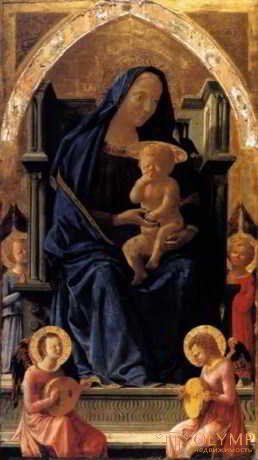
Fig. 33. Madonna di San Simone
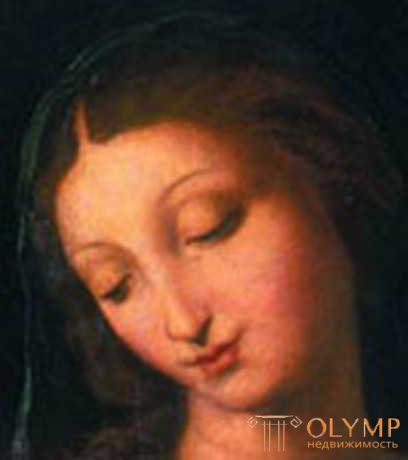
Fig. 34. Madonna del Popolo (1579)
5. New development of Rome
Rome, the ever-young, ever-receptive city on the Tiber, thanks to the painting of Michelangelo and Raphael, again became a place of pilgrimage for young painters of the whole world. About Michelangelo's own school of painting, which always performed all its murals alone, is of course out of the question. Still should name two significant artists, as representatives of his circle. The most important is the Venetian Sebastiano Luciani, nicknamed Sebastiano del Piombo (c. 1485–1547), about whom Akyardi issued a new work. We meet him in Venice as an excellent student of Bellini and Giorgione. But he left Venice in order to join Rome first (in 1511) to Raphael, and soon exclusively to Michelangelo. His early Roman works in Farnesina betray a Venetian, but already unsure of himself. The influence of Raphael is shown, in particular, by some of his beautiful waist portraits, formerly considered Rafael, and now recognized by most experts for the best works of Sebastiano himself. They include such magnificent portraits as the “Beautiful Roman” of the Berlin Museum, the so-called “Fornarin” in the Uffizi, the “Fiddler” in the collection of Baron Alfons Rothschild in Paris and the “Young Man in a Fur Coat” in the collection of Prince Chertori in Krakow. At the head of the works of Sebastiano, arisen in the course of the Michelangelov direction, there is a magnificent, with a slight Venetian tint of “Pieta” in the Viterbo Museum, conceived in complete unity with the landscape, then “Descent from the Cross” in St. Petersburg, conceived in a completely different composition, but internally it is akin to it, and above all - an expressive, but without all the same internal unity, the "Resurrection of Lazarus" (1519) of the London Gallery. In contrast to him is a powerful "torment of sv. Agatha ”(1520) in the Palazzo Pitti is more like the disciples of Raphael like Giulio Romano. The “Whipping of Christ” (according to Michelangelo’s drawing) in San Pietro in Montorio in Rome, “Christ on the threshold of hell” and “Carrying the Cross” in Madrid are striking in their own way. Finally, Sebastiano’s later stately portrait painting is presented by his calm and penetrating Adrian VI in the Naples Museum, the portrait of the lady in the Hulchinsky collection in Berlin, the “Knight” in the Emperor Frederick Museum in Berlin, and in particular his portrait of Andrea Doria in Doria Palace in Rome, full expressions of inflexibility. Such a mixed art, like Sebastiano, could, of course, create some magnificent works, but could not give a legacy.
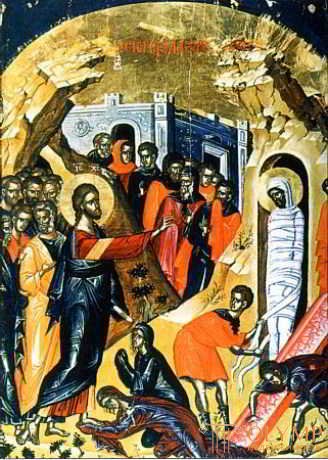
Fig. 35. The Resurrection of Lazarus (1519)
From Sodom to Michelangelo passed Daniele Richcharelli da Volterra (died in 1566). This artist should have written only his majestic, striking in vitality, animated by the feeling of suffering "Descent from the Cross" in Santa Trinita ai Monti in Rome, in order to be included in the real engines of art, and nothing more.
From among the students of Raphael and his staff in the workshop, we already met Francesco Penny, nicknamed “il Fattore” (1488–1540), and Giulio Pippi, or Romano (1492–1546). We will not return to their participation in the performance of the latest series of frescoes by Raphael. Among the oil paintings and sold, as we believe, together with Dolmayr, for Raphael, Penny, a simpler and more similar to Raphael artist painted Madonna del Impannat in Palazzo Pitti, “A Visit to the Mother of God. Elizabeth of the Madrid Gallery and the large “Coronation of Our Lady” of the Vatican Assembly, and Giulio Romano, a more independent master, preferring sharp forms, reddish bodily tones and smoky shadows, performed the famous “Pearl” of the Madrid Gallery, the great Archangel Michael, of St. Margarita and John of Arragon at the Louvre. Independent activities Penny can be omitted. Giulio Romano, to whom the Count d'Arco dedicated the book, led his art to new victories, first in Rome after the death of Raphael and then in Northern Italy, and to greater independence, after Federigo Gonzaga called him in 1524 in Mantua. From his easel paintings "Stoning Stefano in San Stefano in Genoa stands still at the height of Roman historical painting, while his Madonna with a Cat in the Naples Museum shifts towards a religious genre of such order as the famous Madonna with a Basin of the Dresden Gallery. More important is the work of Giulio in Mantua. The frescoes on the plots from the Trojan War in the ducal castle reveal his close relationship to the archaeological work of this time. A bold baroque innovator, he is in the last hall of the Palazzo del Te (1532–1534) painted by him, whose ceiling and walls are framed by one large, strikingly realistic picture “The Falls of the Giants”, without framing, but his pupil Rinaldo Mantovano . The position of Romano among the successors of Raphael is determined by his desire to merge the archaeological, realistic and baroque currents together.
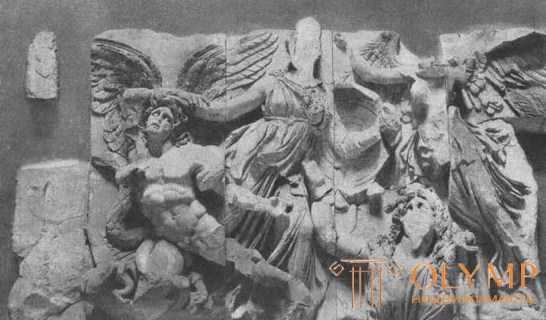
Fig. 36. The painting "The Falls of the Giants"
Of the subsequent students of Rafael Pietro Buonaccorsi, nicknamed Perino del Vaga (1500–1547), transferred Roman painting “grotesque” in a somewhat shredded form to Genoa, where he decorated the palace of Andrea Doria. Then Giovannida Udine (1487–1564), an independent artist in the field of decorative painting with animals, landscapes and garlands of fruits, who brought ancient Roman ornamental grotesques into the painting of pilasters in his own way, brought his art from Rome to Florence and finally back to Venice (Palazzo Grimani), where he himself came from.
In connection with Michelangelo, he developed into the main representative of the facade painting of Polidoro da Caravaggio (1495–1543). Spread out in Rome by Peruzzi, this painting was painted either with a fresco or “graffito” (that is, by scraping a white drawing on a dark background covering the plaster). We know his facades only from engravings; inside the paintings of Polidoro, in San Silvestro on Monte Cavallo, two certified Vasari brown mountain landscapes are preserved in San Silvestro with images of St. Catherine and sv. Magdalene performed by him with Maturino, his friend. I spoke in detail elsewhere about these very early church landscapes that had arisen before 1527. They start a new developing kind of landscapes.
A later generation of artists, who perceived the art of Michelangelo and Raphael only from second-hand, was immensely proud in Rome of his paintings, skillfully and cleverly conceived, in which he used inherited forms without reasoning. The main representatives of this trend were Taddeo Zuckari (died in 1566) and his brother and pupil Federico Zuccari (died in 1609) from Sant'Angelo in Vado, near Urbino, and their main works are frescoes from the history of the Farnese family in caprarol. To “Accademia di San Luca” in Rome, Federigo stood in the closest respect. When it was transformed (in 1505), he became its first "representative". The new "academic" century got its start.
6. Unique Italian destinations
Along with wall and easel painting in central Italy, some of its artistic and industrial branches flourished as well. Painting on glass, mainly from northern masters, mosaic painting from Venetian, and miniature from Upper Italian, experienced only their late flowering. Only Italian wood inlay was in full development, and Middle Italian ceramics flourished in luxurious colors painted with paintings or ornaments of majolica utensils from Castel Durante, Siena, Deruta and Urbino; Middle Italian engraving on copper, revived in the hands of Upper Italian masters, competed with it in the dissemination of the language of the forms of the Raphael school. Its main representative, the famous Marcantonio Raimondi from Bologna (died before 1534), to whom Delabord devoted the book, followed by engravings from the works of his teacher Francia, then Dürer and Michelangelo, “Bathing Soldiers” of which he furnished the northern landscape, joined Rome from 1510, first to Peruzzi, as Vikgof proved, and then completely to Raphael, from whose cardboards he had decorated Parnassus and Galatea. However, he mainly engraved his own, for this purpose, made drawings, such as “The Beating of Babies in Bethlehem”. Marcantonio therefore became the father of printed engravings on copper, which, as Toda showed, in the hands of his students Agostino Veneziano and Marco Dente, engaged in the prevalence of the discoveries of the Roman school of painters, mainly reproducing samples of ancient sculpture and contributed to this improvement, but also to generalization and patterned Italian, as well as European, artistic language.
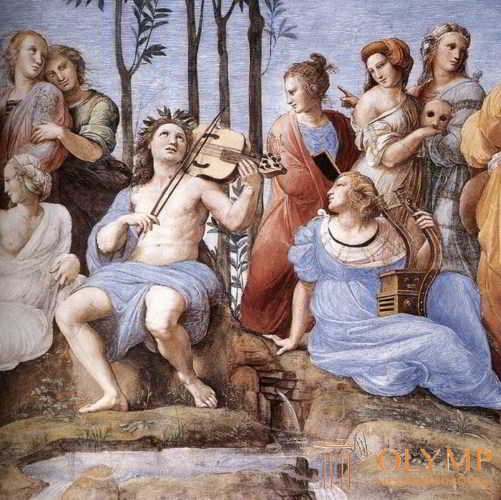
Fig. 37. Rafael's Parnassus
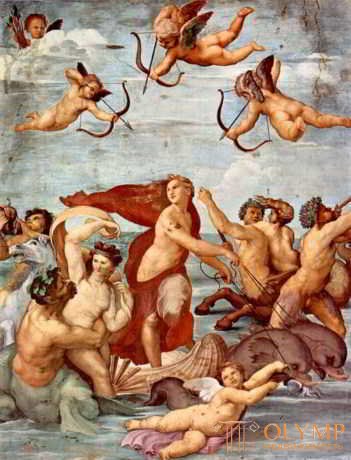
Fig. 38. "Galatea" by Raphael
Что бы оставить комментарий войдите
Комментарии (0)